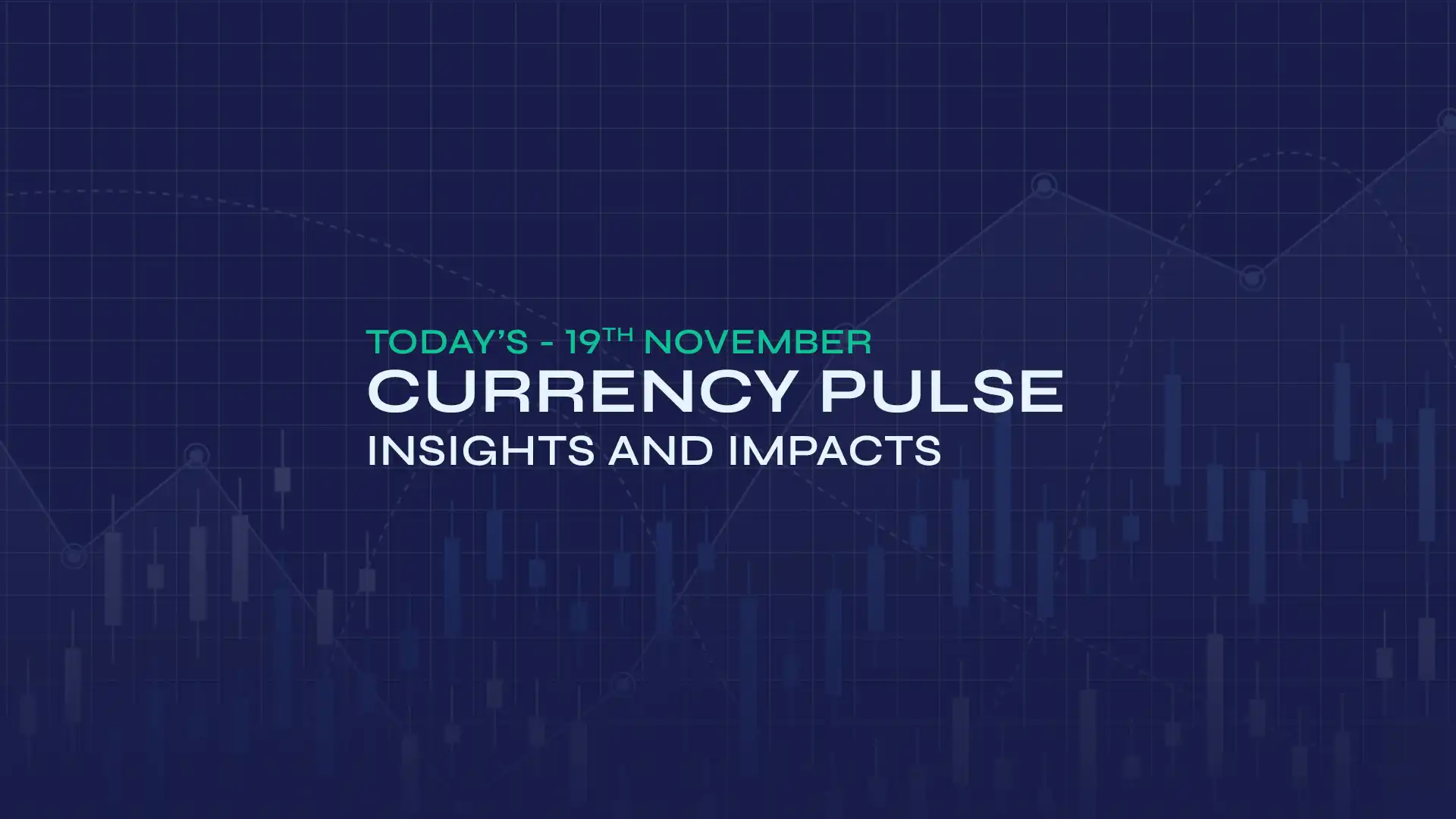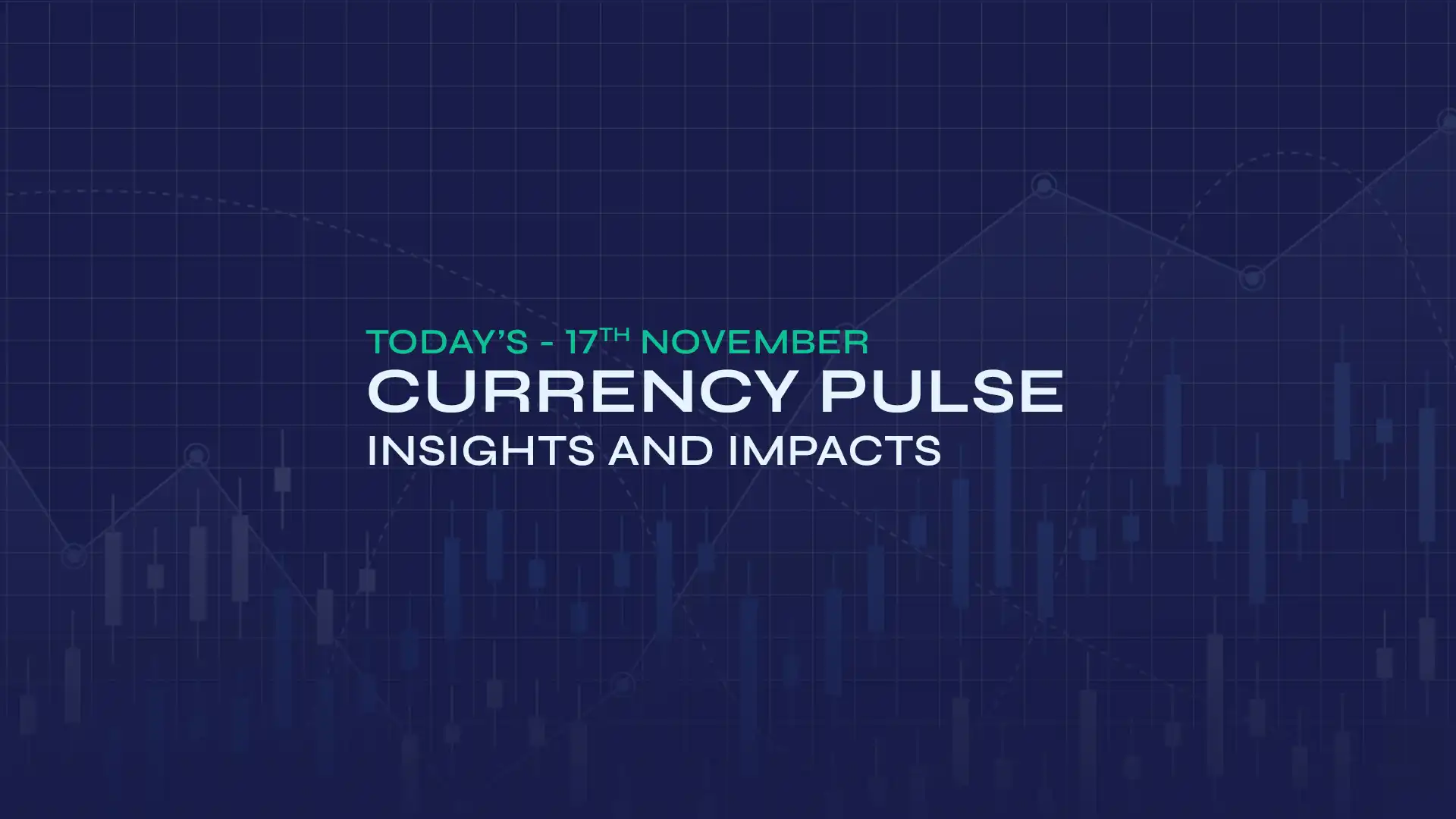EUR/GBP climbed to 0.8507 amid rising optimism over a potential UK-US trade agreement. Improved market sentiment stems from expectations that the impact of reciprocal tariffs under Donald Trump's trade policies will be capped, particularly since the UK faces the lowest additional US duty of just 10% among major trading partners. However, the recent release of UK economic data offered mixed signals, contributing to a cautious market mood amid persistent economic uncertainty, further influencing the pound. In April, the UK manufacturing sector encountered difficulties, with final PMI data confirming a continued contraction. Export orders saw their most significant drop in almost five years, primarily due to increasing costs from US tariffs and rising domestic employer taxes. The S&P Global UK Manufacturing Purchasing Managers' Index (PMI) for April 2025 was finalised at 45.4, an upward revision from the initial estimate of 44.0 and slightly above the March figure of 44.9. On the policy front, Bank of England (BoE) Governor Andrew Bailey highlighted the risks associated with increasing global trade tensions, advocating for these factors to be taken into account in upcoming policy decisions. The market anticipates a 25 bps rate reduction by the Bank of England (BoE) in the upcoming May 8 policy meeting.
On the euro's front, market speculation that the European Central Bank (ECB) will ease its deposit rates by 25 bps at the June policy meeting adds volatility to the euro. Additionally, a dovish stance by the ECB policymakers signals a further slowdown in inflation and economic growth in response to tariffs imposed by the US on its trade partners. On the economic front, the Eurozone Harmonised Index of Consumer Prices (HICP) increased by 2.2% year-over-year (YoY) in April, maintaining the same pace observed in March, according to official data released by Eurostat on Friday. Market consensus anticipated a 2.1% figure for the reported period. The core HICP rose by 2.7% over the year in April, compared to a 2.4% acceleration in March, surpassing the 2.5% expectations. On a monthly basis, the bloc's HICP advanced by 0.6% in April, consistent with March's increase. The core HICP inflation remained at 1% month-over-month (MoM) during the same period. The European Central Bank's (ECB) inflation target is 2.0%. The old continent's HICP inflation data significantly influences the market's pricing of the ECB's future interest rate cuts. Meanwhile, the bloc's unemployment rate was 6.2% in March.
In today's session, optimism over a potential UK-US trade agreement and Eurozone consumer inflation figures will drive the EUR/GBP exchange rate.
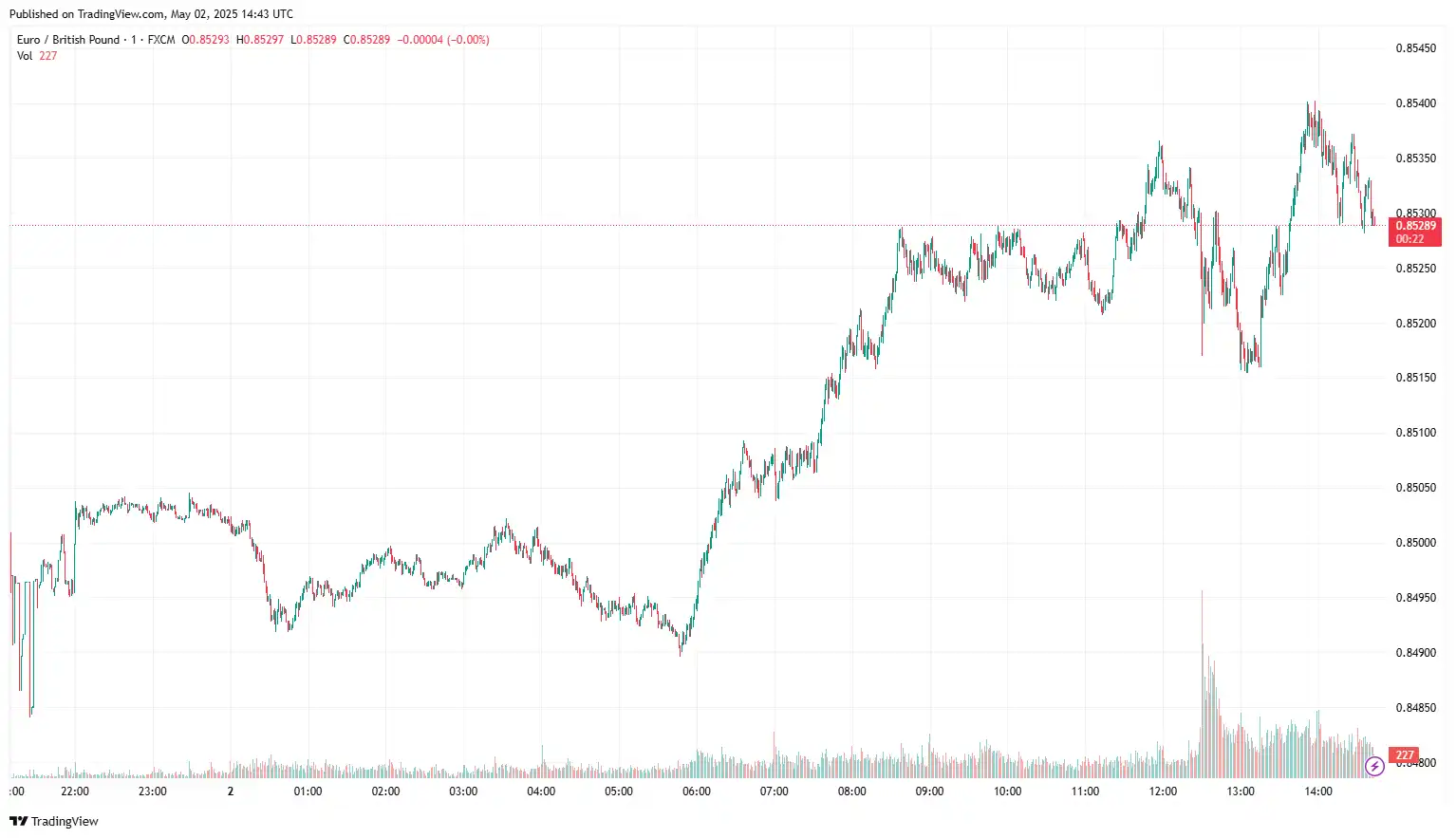
AUD/USD Gained Despite Disappointing Retail Sales
AUD/USD edged higher near 0.6420, as improved market sentiment and growing hopes for easing US-China trade tensions supported the risk-sensitive Aussie. Recent data released by the Australian Bureau of Statistics (ABS) indicated that Retail Sales, a measure of the country's consumer spending, rose 0.3% MoM in March, compared to an increase of 0.8% in February (revised from 0.2%). Australia's trade surplus increased to 6,900M MoM in March, surpassing the anticipated 3,130M and the previous 2,852M. Additional details indicated a 7.6% month-over-month (MoM) rise in Australian exports in March, recovering from a decline of 4.2% the month prior. In contrast, imports decreased by 2.2% month-over-month (MoM) in March after increasing by 1.8% in February. Australia's Producer Price Index (PPI) for final demand increased by 0.9% in the first quarter of 2025 compared to the prior quarter and 3.7% compared to last year. Australia's Consumer Price Index (CPI) rose by 0.9% quarter-on-quarter (QoQ) in the first quarter (Q1) of 2025, up from a 0.2% climb in the fourth quarter. Market expectations were for a growth of 0.8% during this period. Year-over-year, Australia's CPI inflation held steady at 2.4% in Q1, unchanged from the previous year and exceeding the market consensus of 2.2%. The RBA Trimmed Mean CPI saw an increase of 0.7% quarterly and 2.9% annually. Forecasts suggested a 0.7% increase in QoQ and 2.9% year-on-year (YoY) for the quarter ending in March. The monthly Consumer Price Index maintained a steady rate of 2.4% YoY in March, equal to the prior figure of a 2.4% increase.
President Trump indicated potential talks with India, Japan, and South Korea on the global front and expressed optimism about resolving tensions with China, improving the market mood. According to reports, China engaged in renewed trade talks with the US, indicating that Washington has expressed interest in resuming negotiations. Stronger-than-expected first-quarter inflation data, coupled with market anticipation of monetary easing by the Reserve Reserve Bank of Australia (RBA), continues influencing investor sentiment regarding the risk-sensitive Aussie.
On the greenback front, while signs of easing US trade tensions supported the currency, investors remained cautious ahead of the upcoming Nonfarm Payrolls (NFP) report. The US manufacturing sector continued to contract in April, with the ISM Manufacturing PMI dropping to 48.7 from 49 in March, better than the expected 48. The Employment Index rose to 46.5 from 44.7, indicating a slowing of the payroll decrease. Meanwhile, the Prices Paid Index rose to 69.8 from 69.4. According to the US Department of Labour, there were 241,000 initial jobless claims in the week ending April 26. This follows the previous week's count of 223,000 (revised from 222,000) and exceeded the market forecast of 224,000.
Investors will focus on US Nonfarm Payrolls (NFP) data for April, the Federal Reserve's (Fed) monetary policy outlook, and signs of de-escalation in the trade war between the United States and China for fresh impetus on the AUD/USD exchange rate.
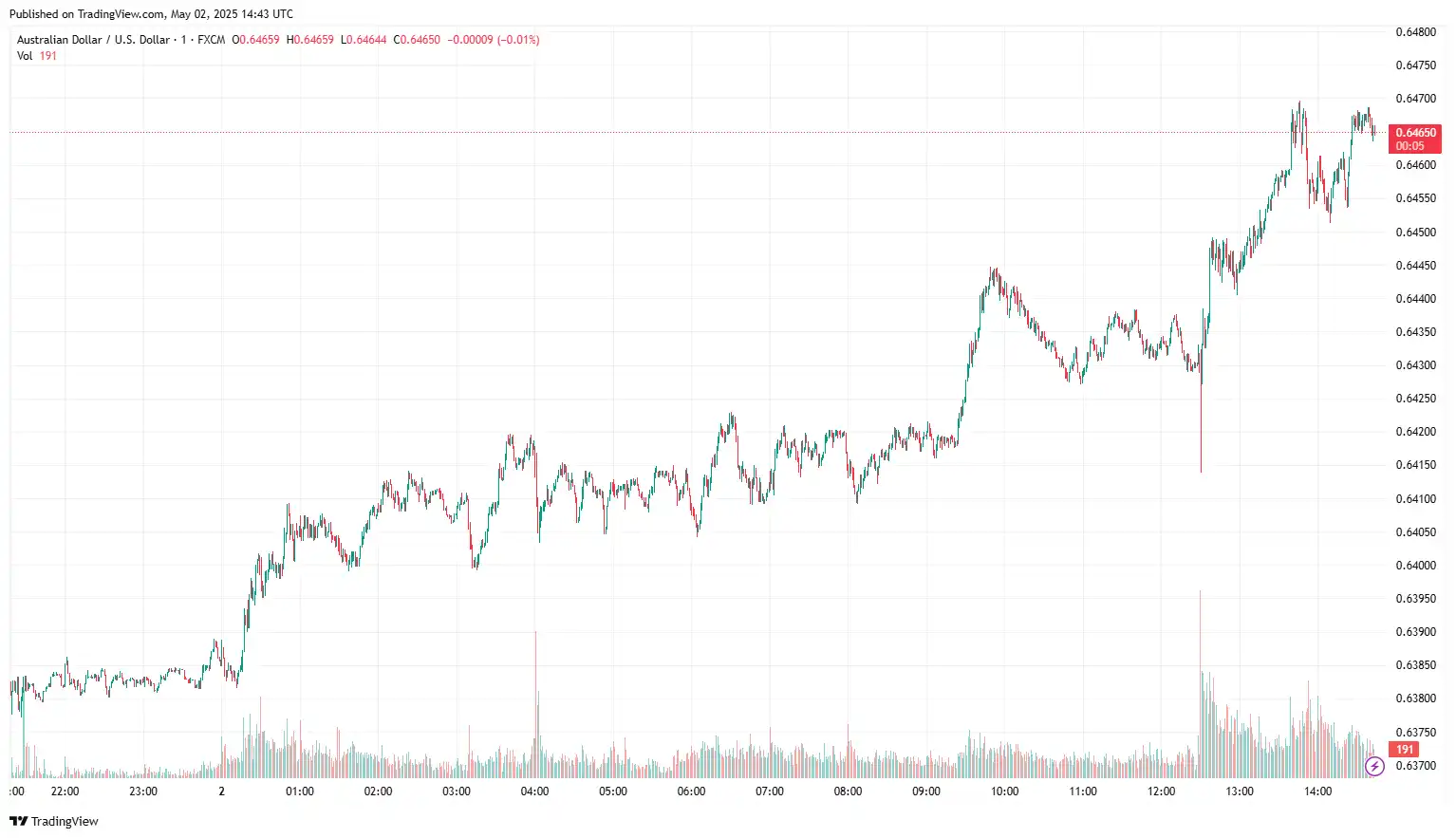
USD/CAD Struggles Ahead of the NFP Report
USD/CAD weakened near 1.3825 as investors remained cautious ahead of the upcoming Nonfarm Payrolls report to examine how Trump's tariffs affected the US labour market. However, President Trump's indication of potential talks with India, Japan, and South Korea, as well as his willingness to resolve tensions with China, improved the market mood, supporting the US dollar. According to reports, China engaged in renewed trade talks with the US, indicating that Washington has expressed interest in resuming negotiations.
On the domestic front, the S&P Global Manufacturing PMI fell to 45.3 in April, down from 46.3. This marks the third consecutive monthly decline and the lowest reading since May 2020, driven by a sharp contraction in output and new orders. Additionally, the Canadian economy experienced a contraction in February, despite economists anticipating flat GDP growth. The economy shrank by 0.2% following a 0.4% increase in January. On the political front, the Liberal Party's win in the Canadian federal election bolsters Prime Minister Mark Carney's standing in trade talks with the US, further weakening the Canadian Dollar (CAD). The BoC minutes from the April meeting, released on Wednesday, revealed that the central bank left interest rates unchanged at 2.75% amid uncertainty regarding the economic outlook due to additional tariffs announced by US President Donald Trump on April 2. This marked the first time the BoC maintained borrowing rates after reducing them seven consecutive times. The minutes also indicated that policymakers still believe the effects of previous rate cuts have yet to be felt in the economy; therefore, policy easing at this stage could have been a "premature" move. Additionally, the minutes stated that the central bank would remain flexible regarding monetary policy adjustments until "medium- to long-term inflation expectations remained anchored." Market speculation that the Bank of Canada (BoC) will start reducing interest rates again at the policy meeting in June will add volatility to the Loonie.
On the other hand, easing trade tensions and market sentiment around the upcoming Nonfarm Payrolls (NFP) report continue to fluctuate the USD. On the data front, the US ISM Manufacturing PMI declined to 48.7 in April from 49.0, remaining in contraction but better than the anticipated 48.0. Meanwhile, initial jobless claims increased to 241,000 for the week ending April 26, surpassing forecasts of 224,000 and rising from the previous week's 223,000. US Secretary of State Marco Rubio remarked on Friday that the positions of Ukraine and Russia remain considerably apart, noting that a significant breakthrough in Ukraine will be essential for progress. However, US President Donald Trump needs to determine how much time to devote to this issue.
Broader market sentiment surrounding the US April employment report and the dynamics of oil prices will influence the USD/CAD exchange rate.
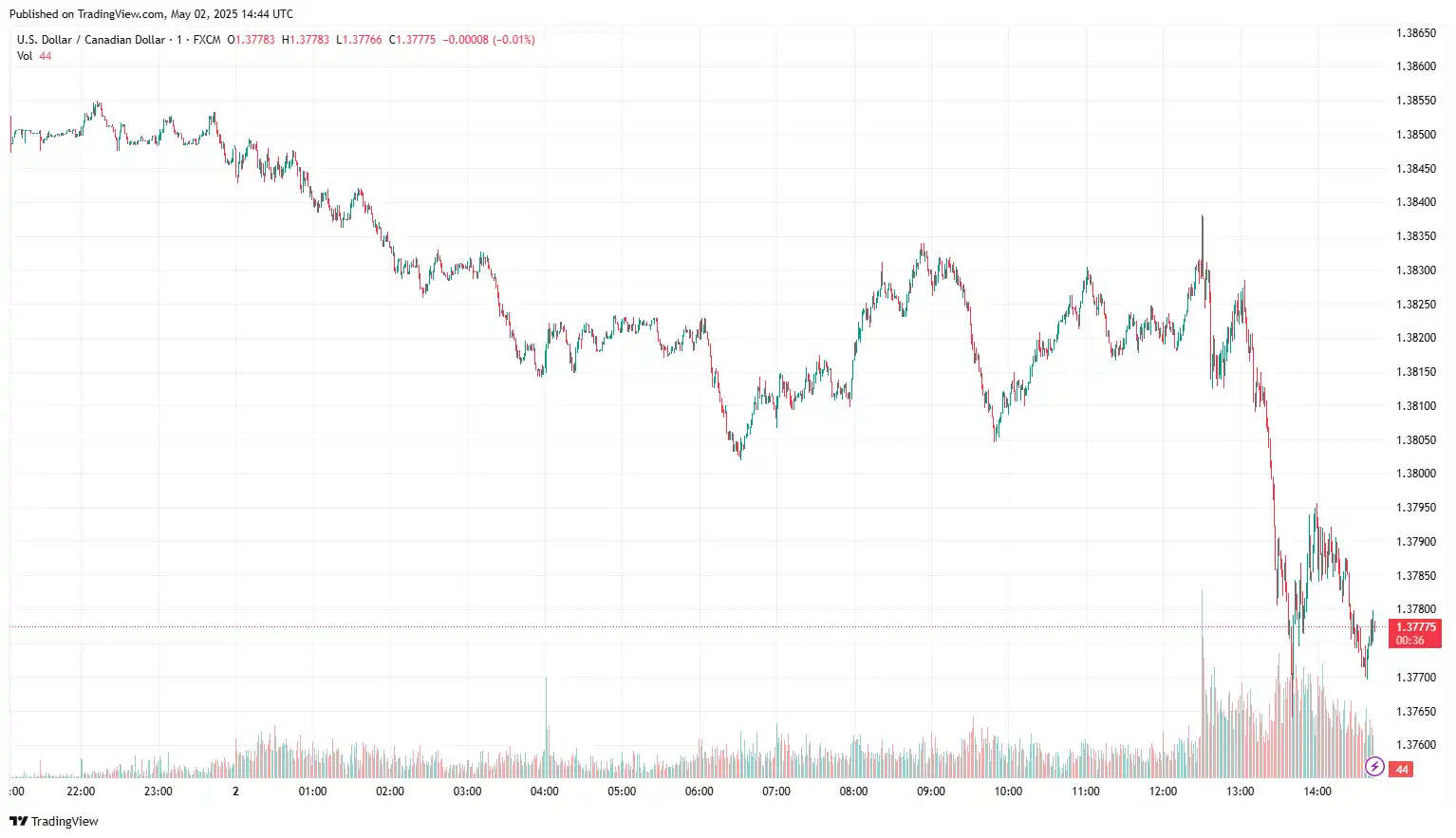
EUR/USD Rebounds After Eurozone Preliminary HICP Inflation Data
EUR/USD recovered near 1.1328 amid optimism about a de-escalation in the global trade conflict and the release of crucial economic data from the Eurozone. Market speculation regarding a potential 25 basis point cut in deposit rates by the European Central Bank (ECB) during the June policy meeting creates volatility in the euro. Furthermore, a dovish outlook from ECB policymakers suggests a continued decline in inflation and economic growth, influenced by tariffs imposed by the US on its trading partners. On the economic front, the Eurozone Harmonised Index of Consumer Prices (HICP) rose by 2.2% year-over-year (YoY) in April, well above the market consensus of 2.1%, matching the pace seen in March, according to data released by Eurostat on Friday. The core HICP increased by 2.7% year-over-year in April, up from 2.4% in March, exceeding the expected 2.5%. On a monthly basis, HICP in the bloc grew by 0.6% in April, consistent with March's increase. The core HICP inflation remained at 1% month-over-month (MoM). The ECB's target for inflation is 2.0%. The HICP inflation data from Europe has a considerable impact on market expectations of future ECB interest rate cuts. Additionally, the unemployment rate in the bloc stood at 6.2% in March. The Eurozone economy grew by 0.4% in the three months leading up to March 2025, building on a 0.2% growth in the fourth quarter of 2024, aligning with market forecasts, as shown in a preliminary estimate released by Eurostat on Wednesday. The Gross Domestic Product (GDP) for the bloc grew at an annual rate of 1.2% in Q1, compared to 1.2% in the previous quarter, meeting the 1% estimate.
Conversely, easing trade tensions and market sentiment regarding the upcoming Nonfarm Payrolls (NFP) report continue to sway the USD. On a data outlook, the US manufacturing sector experienced ongoing contraction in April, with the ISM Manufacturing PMI declining to 48.7 from March's 49, although this was better than the anticipated 48. The Employment Index improved to 46.5 from 44.7, suggesting a deceleration in job losses. At the same time, the Prices Paid Index increased to 69.8 from 69.4. According to the US Department of Labour, the week ending April 26 saw 241,000 initial jobless claims, up from the previous week's revised count of 223,000 (originally reported as 222,000) and surpassing the market expectation of 224,000. Economists anticipate that the Nonfarm Payrolls will reveal a job gain of 130,000 in April after a remarkable print of 228,000 in March. The Unemployment Rate (UE) is projected to remain at 4.2% during the same period. Meanwhile, Average Hourly Earnings (AHE), a closely monitored indicator of wage inflation, are expected to increase by 3.9% year-over-year (YoY) in April, following a 3.8% rise in March.
In today's session, the Eurozone inflation data and the US labour market report will influence the EUR/USD exchange rate.
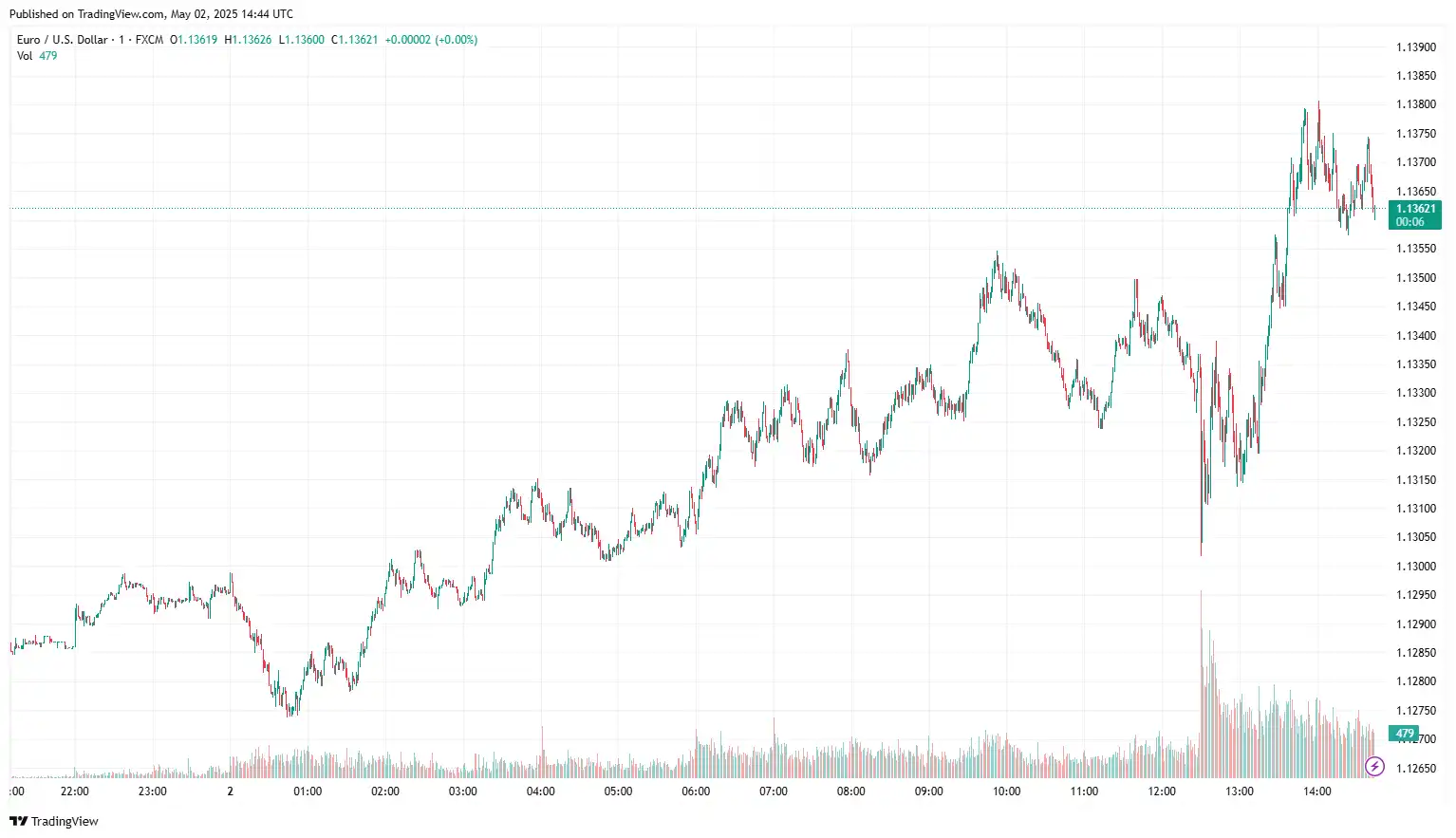
Stay Ahead in the Currency Game
Whether you're a daily FX trader or handle international transactions regularly, our 'Currency Pulse' newsletter delivers the news you need to make more informed decisions. Receive concise updates and in-depth insights directly in your LinkedIn feed.
Subscribe to 'Currency Pulse' now and never miss a beat in the currency markets!
Ready to act on today’s insights? Get a free quote or give us a call on: +44 (0)20 7740 0000 to connect with a dedicated portfolio manager for tailored support.
Important Disclaimer: This blog is for informational purposes only and should not be considered financial advice. Currency Solutions does not take into account the investment objectives, financial situation, or specific needs of any individual readers. We do not endorse or recommend any specific financial strategies, products, or services mentioned in this content. All information is provided “as is” without any representations or warranties, express or implied, regarding its accuracy, completeness, or timeliness.



